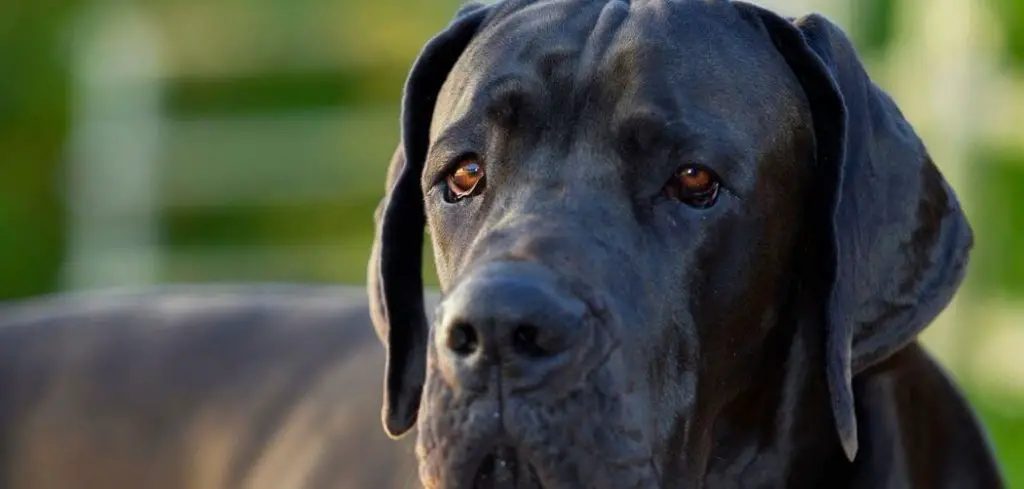A dog panting while having a runny nose can worry any dog owner. While occasional panting is normal, persistent panting paired with nasal discharge may indicate an underlying health issue that needs attention.
We outline the common reasons why a dog may pant and have a runny nose, what you can do at home, and when to seek veterinary help.
Table of Contents
Dog Panting and Nose Running — Why It Happens
When a dog is panting and has a runny nose, it may point to respiratory infections, allergies, nasal irritation, or foreign objects in the nasal passages. Panting can occur because breathing feels harder or the dog is uncomfortable. In some cases, heart disease or more serious respiratory conditions may be involved.

Dog Panting and Nose Running: Common Causes
Allergies
Allergies are a frequent reason for a runny nose in dogs and can lead to panting. Environmental allergens like pollen, dust, or mold irritate the nasal passages, causing watery discharge.
Panting may increase as the dog becomes uncomfortable or tries to cool down from inflammation-induced stress.
You may notice frequent sneezing, pawing at the face, watery eyes, or itchy skin. While mild allergies can be managed at home, persistent symptoms require veterinary evaluation to prevent secondary infections.
Read more: Dog Panting and Nose Bleeding (Causes and treatments)
Upper Respiratory Infections
Bacterial, viral, or fungal infections of the upper respiratory tract can cause both panting and nasal discharge. Infections inflame the nasal and throat tissues, making it harder for the dog to breathe comfortably, which leads to panting.
Other signs include coughing, sneezing, lethargy, loss of appetite, and sometimes fever.
Timely veterinary treatment is crucial to clear the infection and prevent complications such as pneumonia.
Foreign Objects in the Nose
Objects like grass seeds, small sticks, or dirt lodged in the nasal passages can trigger a runny nose and panting. The foreign material irritates the nasal lining, causing discharge and sometimes minor bleeding.
Panting may increase as the dog struggles to breathe comfortably.
You might notice frequent sneezing, pawing at the nose, or rubbing the face on surfaces. Veterinary removal of the object is important to prevent infection or further nasal damage.
Nasal Tumors or Polyps
Growths in the nasal passages, such as tumors or polyps, can lead to a runny nose and increased panting. These growths may obstruct airflow or damage blood vessels, causing discharge and stress-related panting.
Other signs can include facial swelling, foul-smelling discharge, sneezing, or reluctance to eat. Early veterinary intervention allows for imaging, biopsy, and treatment, which may include surgery or medication.
Dental Disease
Severe dental issues can affect the nasal passages and lead to panting with nasal discharge. Infections in the teeth or gums may spread to the nasal cavity, causing fluid build-up and inflammation. Panting often occurs due to pain or stress.
Watch for signs like bad breath, difficulty eating, drooling, or pawing at the mouth. Prompt veterinary dental care can prevent further infection and improve overall health.
Heart or Lung Conditions
Heart or lung problems can manifest as panting accompanied by nasal discharge. Conditions like congestive heart failure or respiratory diseases may cause fluid accumulation, making breathing more difficult and prompting panting.
Owners may observe coughing, exercise intolerance, fatigue, or bluish gums. Early diagnosis and treatment by a veterinarian are essential to manage these potentially serious conditions.
Environmental Irritants
Exposure to smoke, chemicals, perfumes, or dust can irritate a dog’s nasal passages. This irritation often leads to a runny nose and panting as the dog reacts to discomfort.
Other signs include sneezing, watery eyes, and rubbing the face against objects. Reducing exposure and improving indoor air quality can help alleviate symptoms, but persistent issues require veterinary assessment.
What to Do If Your Dog Is Panting and Nose Running
Keep your dog in a calm, comfortable environment to reduce stress-related panting. Ensure access to fresh water to keep your dog hydrated, especially if nasal discharge is present.
Monitor the consistency, color, and amount of nasal discharge. Clear discharge may indicate mild irritation or allergies, while yellow, green, or bloody discharge could suggest infection or other serious causes.
Avoid exposing your dog to potential irritants, such as smoke or dust, and limit outdoor exposure during high pollen periods if allergies are suspected.
Gently wipe away nasal discharge with a clean cloth to prevent skin irritation. Do not attempt to insert anything into the nostrils, as this can worsen the problem.
Consult your veterinarian promptly if symptoms persist, worsen, or are accompanied by coughing, lethargy, loss of appetite, or fever. Proper diagnosis ensures the underlying cause is treated effectively.
When to Call or Visit Your Vet
Seek immediate veterinary care if your dog exhibits:
Thick, discolored, or bloody nasal discharge
Persistent panting at rest or difficulty breathing
Lethargy, weakness, or collapse
Loss of appetite or vomiting
Swelling around the face or nasal passages
Timely veterinary evaluation helps identify serious issues such as infections, nasal growths, or respiratory conditions, ensuring appropriate treatment and reducing the risk of complications.
Read more: Dog Panting and Dry Nose (What it could mean)
Key Takeaway
Panting and a runny nose in dogs can be caused by allergies, infections, foreign objects, nasal tumors, dental disease, heart or lung conditions, or environmental irritants.
While some causes may be minor, persistent or severe symptoms require veterinary attention.
Monitoring your dog, keeping them comfortable, and seeking timely veterinary care are crucial steps to ensure your dog’s health and well-being.
